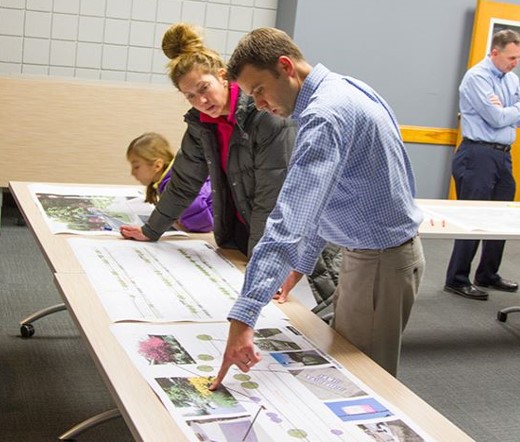Communicating with Your Community
Posted on Wednesday, March 28th, 2018 by Kristen Leathers-GrattonIn Project Strategies, tagged in

Last month at the Transportation Engineers Association of Missouri conference, I shared five questions every entity should ask before creating a public engagement strategy. Below, you’ll find details on each one.
Why?
It’s important to start by considering why you’re communicating with the public. It will influence the content you’re sharing and the way it is conveyed. Determine if the goal is to:
- Gather information.
- Provide education.
- Survey or collect feedback on preferences.
- Share information about the project.
- Acquire easements or right-of-way.
- Celebrate and say “Thank you!”
Or, you may find the goal includes several of these. Let this information inform your responses to the other four questions.
Who?
After determining your “why,” we suggest you ask “who?” Accurately identifying your audience and tailoring your message to that group has a direct correlation to the success of your communication efforts. Often, we are working with multiple generations with varying degrees of comfort and access to technology. Ask yourself if your audience is:
- Local or regional?
- Multi-generational?
- Comprised of residents and HOA’s?
- Made up of businesses and customers?
- Elected officials?
- Agencies?
Your answers to these questions will guide you in selecting communications tools and tactics, as well as which information should be shared.

What?
Next, outline what you’ll be communicating. To a certain degree, your audience will influence which of these components apply. Do you need to share:
- The scope of the project?
- Project schedule?
- Access information during construction?
- Construction 101?
- Restoration?
- Interruption of utilities?
- Point of contact?
When?
Now, it’s time to decide the frequency with which you would like to communicate. Budget should be a factor, along with your resources and the audience.
Align the timing of communication efforts with your project schedule. Having an integrated calendar will ensure you’re reaching people at the most effective time and will make it more efficient to adjust your plans, so they can easily coincide with any changes in timeline.
How?
Lastly, select which tools you plan to use. There are a number of options, ranging from in-person meetings to social media. Choose those which are most likely to reach your desired audience. Some of the options include:
- Print – newspaper or direct mail.
- Door hangers.
- Email.
- Public meetings.
- Surveys or comment forms.
- Traditional media.
- Social media, like Twitter, Instagram, and Facebook.
- Websites, such as Mysidewalks.com and Nextdoor.
- Creating a webpage for project.
- Livestreaming or recording meetings.
Answering these five questions will help you create a communications plan that connects with your community. Tailor yours to fit the audience, scale of the project, desired outcome, and budget. While we’ve learned it’s critical to have a great strategy in place, we also believe in remaining flexible. Knowing when to pivot and change course is equally important.